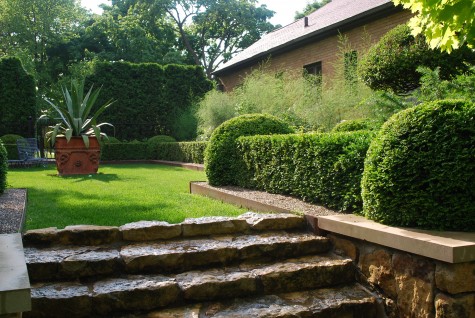
I can think of few plants that have a better service record than my beloved boxwood. Properly cared for, they are very long lived. Old boxwoods have an aura of age which only adds to their beauty. They demand little, and give much. Few broadleaved evergreens can tolerate our cold winters. Though our nurseries are stuffed with blooming Catawbiense hybrid rhododendron in the spring, it is a constant battle to keep them happy and healthy. They simply like Philadelphia better than Detroit. Ilex, kalmia and the like suffer here as well. The boxwood-they thrive. I plant the very hardy Buxus microphylla hybrid Green Velvet; the winter color is as richly green as the summer.
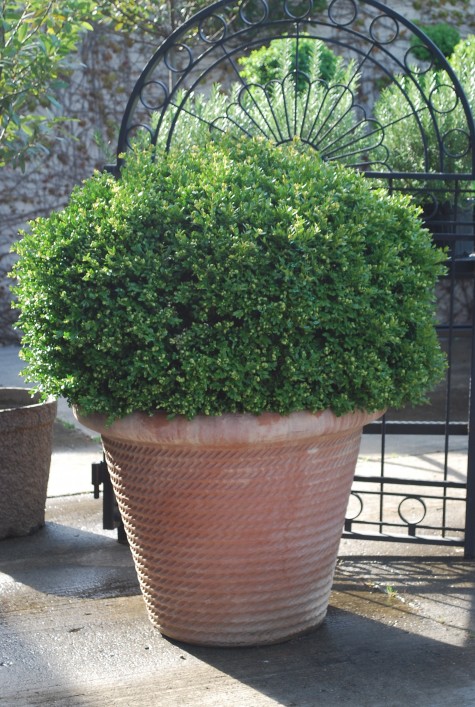 This giant untrimmed ball of buxus microphylla koreana has lived in this French terra cotta pot for 5 years. We wheel it into the garage for the winter-to protect the pot, not the boxwood. The garage has neither light nor heat-not a problem. In March we wheel it back outside for another season. Boxwood can be quite hardy in pots or windowboxes outdoors all winter; the container needs to be frostproof, and the maintenance thoughtful. The buxus microphylla which forms the hedge outside my shop will take on an orangy-olive color in the winter; this winter color is typical. The front of the shop is a southern exposure. The hedge has been there 12 years, and has yet to burn over a winter. Most of the hybrids of boxwood hardy in zone 5 come from this species.
This giant untrimmed ball of buxus microphylla koreana has lived in this French terra cotta pot for 5 years. We wheel it into the garage for the winter-to protect the pot, not the boxwood. The garage has neither light nor heat-not a problem. In March we wheel it back outside for another season. Boxwood can be quite hardy in pots or windowboxes outdoors all winter; the container needs to be frostproof, and the maintenance thoughtful. The buxus microphylla which forms the hedge outside my shop will take on an orangy-olive color in the winter; this winter color is typical. The front of the shop is a southern exposure. The hedge has been there 12 years, and has yet to burn over a winter. Most of the hybrids of boxwood hardy in zone 5 come from this species.
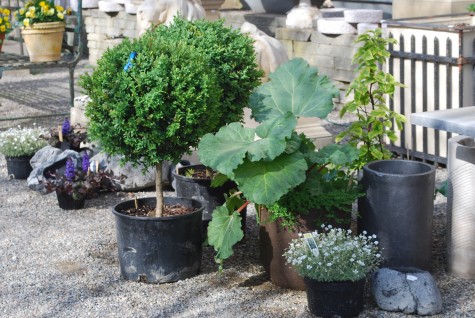
Buxus Sempervirens, commonly called European, or Southern box, is the boxwood variety of my dreams. Lush and large growing, they adapt easily to any sculptural pruning you might dream up. They can grow to twenty feet tall. If you have seen the boxwood planted by Beatrix Farrand at Dumbarton Oaks in Washington, you know how a boxwood planting can be sculpture. Pruned into undulating cloud shapes, this planting is a showstopper. I have seen this boxwood planted in ground in my zone, but a particularly vicious winter has the power to kill them. They are rated for zones 6-8; this rating means what it says. I therefore recommend using them in pots, and wintering them in an interior space. They only need an unheated space; you want them to go dormant, and only wake up when the worst of the winter is past.
I rarely see boxwood topiary of size grown from a zone 5 hardy boxwood. Boxwood is a relatively slow grower; it might take 7 years to get a cutting of Buxus Green Velvet” to 24″ tall. Boxwood in general are expensive. Southern box grows faster in a mild climate, such as the Pacific northwest; they routinely flush growth twice there in a single season. As southern box is a big plant when mature, large scale topiaries such as these are usually grown from this variety. A topiary this size, with a trunk caliper this large-very pricey. But priceless in its return. While it is an investment, your investment will grow and prosper over the years-what gardener could ask for more?
 This boxwood sphere with its attendant topknot/hairdo-what a great looking and very special plant. You might grow topiary boxwood yourself from cuttings-it just takes years. Any grower of nursery material-how incredibly patient they are. They can see the potential for a decently sized plant in a cutting. But very large specimen boxwood such as these do not come along so often; most growers like to sell their material in a shorter time frame. Now and then we will find a grower who has a love for growing unusually large or largely unusual plant material; these growers interest me.
This boxwood sphere with its attendant topknot/hairdo-what a great looking and very special plant. You might grow topiary boxwood yourself from cuttings-it just takes years. Any grower of nursery material-how incredibly patient they are. They can see the potential for a decently sized plant in a cutting. But very large specimen boxwood such as these do not come along so often; most growers like to sell their material in a shorter time frame. Now and then we will find a grower who has a love for growing unusually large or largely unusual plant material; these growers interest me.
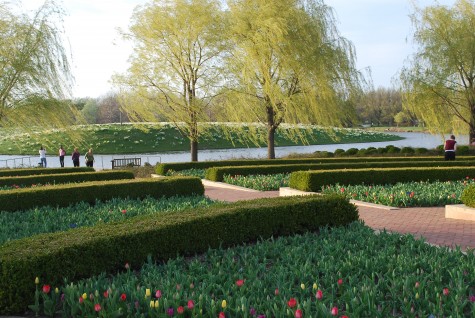
Boxwood is as happy in a supporting form as it is being the star of the show. Their tolerance for clipping and shearing makes them an ideal formal evergreen hedging material, when a small hedge is desirable. These large circular beds beds planted with tulips have a drama that would not be possible with tulips alone. Their geometry and symmetry is an organizing metaphor for this particular garden. The loose growing tulips have an excellent visual partner in the boxwood.
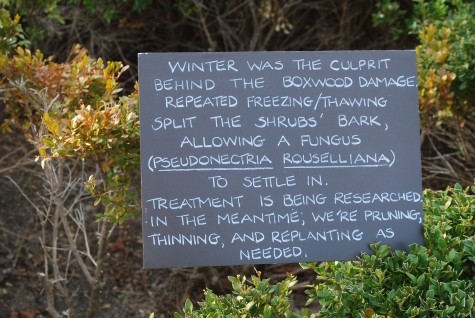 This is not to say boxwood is without its problems. The boxwood at the Chicago Botanic garden suffered terrible damage after last year’s winter-as the sign says. The boxwood in the front of my shop sustained damage much like this. In my case, huge snow loads, as well as freezing and thawing, weighed the plants down such that stems split, and allowed a fungal infection to invade. Heartbreaking.
This is not to say boxwood is without its problems. The boxwood at the Chicago Botanic garden suffered terrible damage after last year’s winter-as the sign says. The boxwood in the front of my shop sustained damage much like this. In my case, huge snow loads, as well as freezing and thawing, weighed the plants down such that stems split, and allowed a fungal infection to invade. Heartbreaking.
These boxwood in my garden suffered similar damage-but I would not for one moment consider not growing them. They are beautiful year round. Gorgeous in growth. Beautiful in the rain, or with fall leaves dusting their tops. Beautiful as a topiary or a hedge. Spectacular in pots.
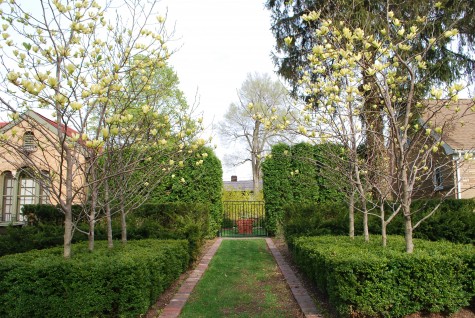
They are a quietly handsome groundcover, under my Yellow Butterflies magnolias. The day the petals fall to the boxwood-one of my favorite days of the gardening year.
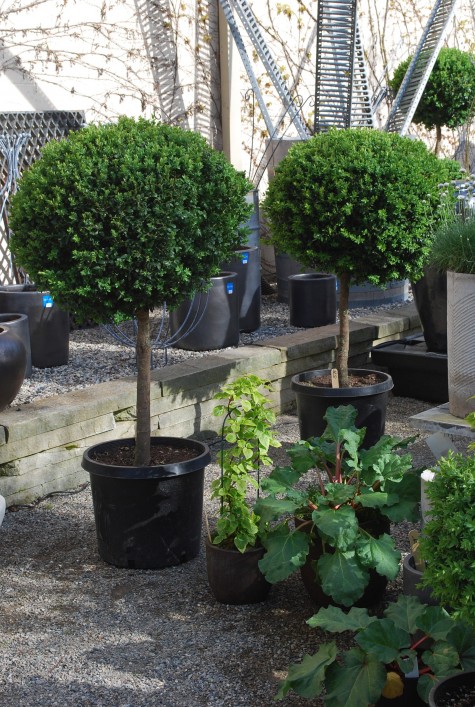
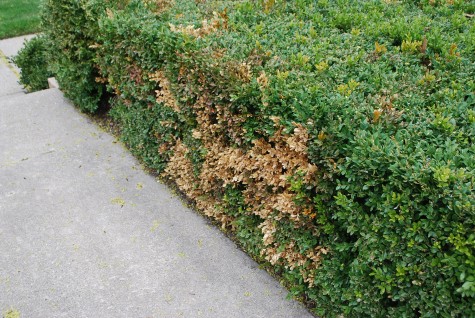
Boxwood are pretty… but the smell! Yuck! I can’t have them in the garden. Way too stinky.
I think it is a genetic trait-being overwhelmed by the smell of boxwood!! I don’t even notice it. You have a sensitive smeller!
I LOVE the smell of boxwood! It reminds me of my Grandparents farm in Maryland.
Deborah, we’re kindred spirits when it comes to Buxus– ancient boxwoods in a landscape are incomparable. If you ever get a chance, check out the Bishop’s Garden on the grounds of the National Cathedral (http://allhallowsguild.org/grounds/bishops.html), those bad boys were old when they were transplanted to the site, donated by Thomas Jefferson.
I think I may have been there-it is in DC isn’t it? Thanks for the link.
Great site! I’m looking to find a supplier for boxwood topiaries. Any suggestions?